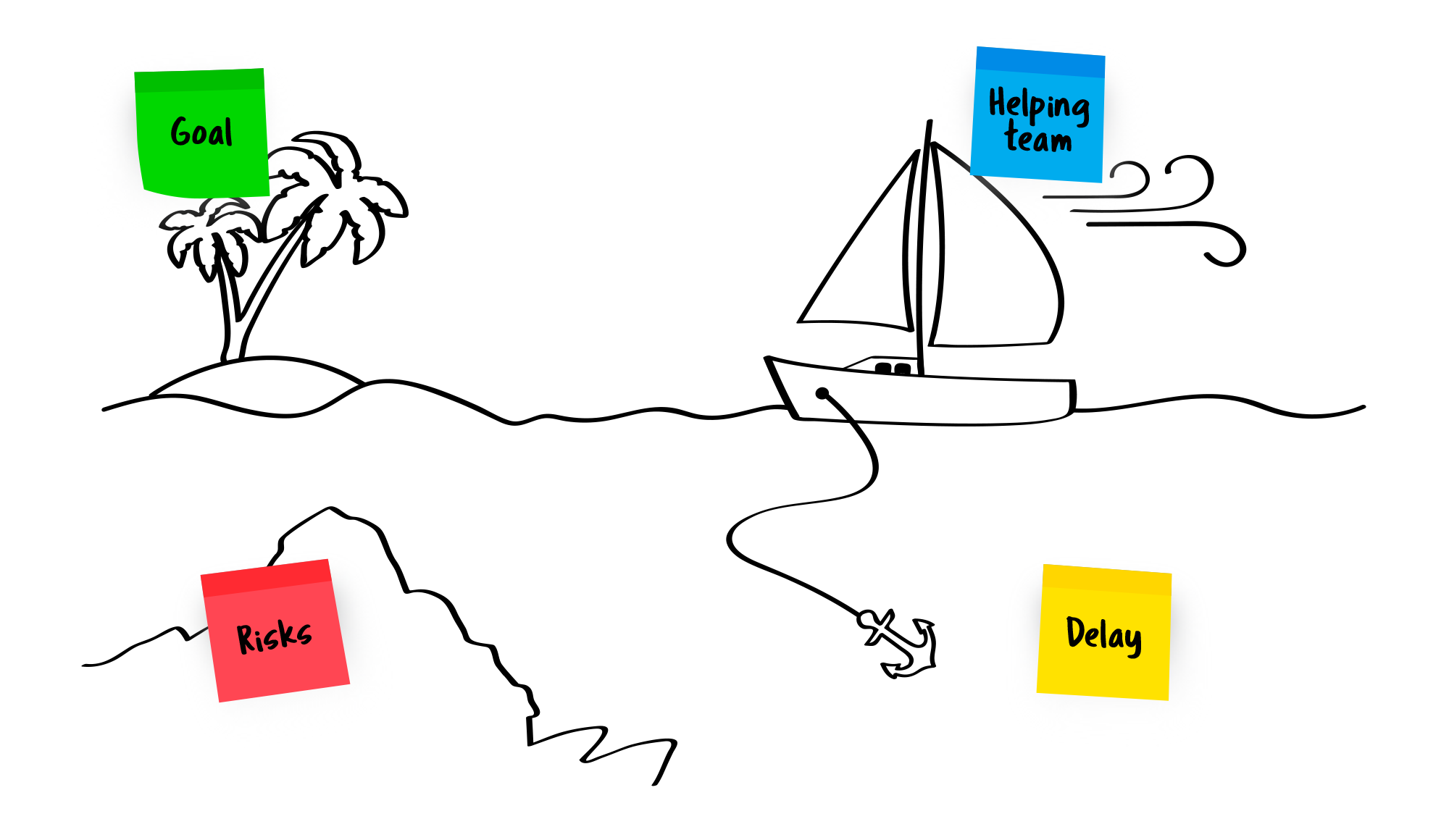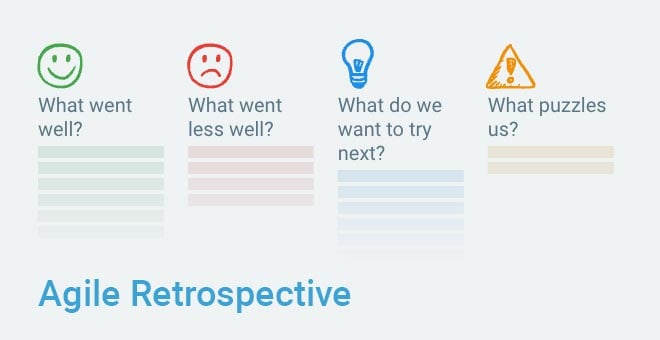Retrospectives
Reflect, inspect and adapt ways of working to drive continuous team improvement
Tim Beattie
Matt Takane
What Is Retrospectives?
Retrospectives provide opportunities for groups to reflect, inspect and adapt their ways of working. They often take place at the end of sprints but can be scheduled at any time. There are a myriad of types of retrospectives you can run with your team, and it's good to mix things up to keep things from getting stale which leads to decline in involvement. You might run something like in the header image (The Heroes Journey), then maybe try this sailboat retro the next time:

Why Do Retrospectives?
Retrospectives facilitate continuous improvement. Rather than wait until the end of a project to run a full "lessons learned" exercise for the entire delivery, we encourage taking short time boxes during delivery for the team to course correct and find ways to improve their way of working. This should come in the form of actions agreed by the team with owners and estimated time due dates, allowing for tracking and helping to ensure their completion.
How to do Retrospectives?
Who do you need?
- Facilitator
- The Team
Suggested Time
- Varies based on the duration of the time period the retrospective is covering. We recommend allowing 30-60 minutes for a one week sprint retrospective.
Difficulty
- Facilitator: Easy
- Participants: Easy
Facilitation Materials Needed
There are lots of different formats retrospectives can take (see the references for links to some excellent resources which provide ideas). Typical materials used during facilitation include:
-
Flat space which will hold sticky notes
-
Stickies (preferably a wide variety)
-
Sharpie pens
-
White-board pens if using a white board or MagicWhiteboard paper
-
Clock for time boxing
Advice
-
Be careful not to dwell too heavily on things outside of the teams control. Ensure you track them and raise them to the relevant owners but value can rarely be found in a one hour ranting session.
-
Retro's are within reason whatever a team needs to be. They can be broad and encompass multiple issues and problems, or with the teams permission can drill down into specific issues using techniques such as the 5 whys.
-
Locations can play a major role in the outcome of a Retrospective. Changing a Retro location to a Cafe, pub or even using techniques such as the walking retro can help to drive out different problems/issues that might not have come up otherwise
Tips for remote working
-
This event can be completed quite easily remotely.
-
Use a virtual whiteboarding tool or another tool that suits the purpose.
-
Prep virtual retro board beforehand.
-
Rotate on retrospective formats among the multiple available, to collect different aspects and engage more with the people.
-
Everyone has cameras on.
-
Everyone co-edits the board.
-
Ask different participants to playback the different topics.
-
Ensure everyone has a chance to contribute.
-
Ensure improvement actions are tracked and monitored:
- agree on their prioritisation among the team before the are fed back into the backlog.
- agree who is in charge of feeding them back to the backlog.
- review improvement actions from previous retrospectives.
-
Encourage a social element such as bring your own drink or food or add in a fun game for celebrating the hard work done by the team.
-
You can consider a rotational responsibility to organise the social event among the team.
Want to run this practice remotely? See the Mural Template below! 💻🙏
Look at Retrospectives
Links we love
Check out these great links which can help you dive a little deeper into running the Retrospectives practice with your team, customers or stakeholders.
